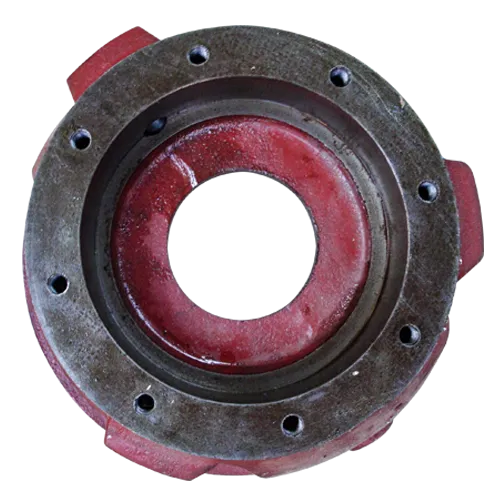Mobile:+86-311-808-126-83
Email:info@ydcastings.com
Advanced Aerospace Aluminum Casting Techniques for Enhanced Performance and Durability
Aerospace Aluminum Castings A Crucial Component in Modern Aviation
The aerospace industry is consistently at the forefront of technological advancements, driven by the need for lighter, stronger, and more efficient components that can withstand the extreme conditions of flight. Among the various materials utilized in aircraft manufacturing, aluminum has gained significant popularity due to its unique properties and versatility. Aerospace aluminum castings serve as a crucial element in this domain, providing robust solutions for numerous components in aircraft design and production.
The Benefits of Aluminum in Aerospace Applications
Aluminum is prized in the aerospace sector for several reasons. Firstly, it is lightweight, which contributes to overall fuel efficiency and performance. Reducing the weight of an aircraft is essential for enhancing its payload capacity and range; hence, aluminum’s lower density compared to other metals makes it an ideal choice. Secondly, aluminum has remarkable strength-to-weight ratios, meaning it can withstand high stresses while remaining light. This is especially important in aerospace applications where components are subjected to varied and often harsh conditions during flight.
Furthermore, aluminum alloys are known for their excellent corrosion resistance, particularly when treated with protective coatings. This quality is vital in the aerospace industry, where components are regularly exposed to moisture, temperature fluctuations, and other environmental factors that could compromise their integrity. The ability of aluminum castings to maintain performance over time makes them a reliable choice for manufacturers.
The Casting Process
The production of aerospace aluminum castings involves several techniques, with the most common being sand casting and investment casting. Sand casting utilizes a sand mold to create the shape of the desired component. This method is advantageous for creating large, complex geometries and is cost-effective for low to medium production volumes. On the other hand, investment casting, also known as lost-wax casting, offers higher precision and is often used for intricate components requiring tight tolerances.
The casting process begins with the preparation of the aluminum alloy, which is melted and poured into a mold. Once the aluminum cools and solidifies, the mold is removed to reveal the casting. Post-casting processes such as machining, heat treatment, and surface finishing are typically employed to fine-tune the final product, ensuring it meets the stringent specifications required in aerospace applications.
aerospace aluminum castings

Applications in Aerospace
Aerospace aluminum castings find application across various components in aircraft, from structural elements to interior fittings. Major parts such as wing ribs, fuselage frames, and engine mounts often utilize aluminum castings due to their strength and lightweight properties. Moreover, components like brackets, housings, and landing gear parts benefit from aluminum's ability to reduce weight while maintaining structural integrity.
In recent years, the demand for aluminum castings in the aerospace sector has been on the rise, driven by innovations in design and manufacturing processes. The integration of advanced materials and manufacturing technologies, such as additive manufacturing and computer-aided design (CAD), has propelled the development of even more complex and lightweight designs.
Future Trends and Innovations
The aerospace industry is continually evolving, with a significant focus on sustainability and efficiency. As the sector moves towards greener technologies, aluminum casting appeals to manufacturers seeking to reduce carbon footprints while achieving high performance. The introduction of recycled aluminum in the casting process supports sustainable practices by minimizing waste and lowering energy consumption associated with metal production.
Furthermore, ongoing research into aluminum alloys is opening up new possibilities for aerospace applications. New compositions and treatments are being developed to enhance the properties of aluminum castings, making them even more suitable for critical aerospace components. Innovations such as heat-resistant alloys and nanocomposites could expand the use of aluminum in environments that were previously deemed unsuitable.
Conclusion
Aerospace aluminum castings play an indispensable role in modern aviation, combining lightweight characteristics with exceptional strength and durability. As technology continues to advance, the potential for aluminum castings in the aerospace industry looks promising. With ongoing innovations and growing emphasis on sustainability, aluminum is poised to remain a cornerstone material for aircraft manufacturing, ensuring safer, more efficient, and environmentally friendly air travel for the future.
-
Why Should You Invest in Superior Pump Castings for Your Equipment?NewsJun.09,2025
-
Unlock Performance Potential with Stainless Impellers and Aluminum End CapsNewsJun.09,2025
-
Revolutionize Your Machinery with Superior Cast Iron and Aluminum ComponentsNewsJun.09,2025
-
Revolutionize Fluid Dynamics with Premium Pump ComponentsNewsJun.09,2025
-
Optimizing Industrial Systems with Essential Valve ComponentsNewsJun.09,2025
-
Elevate Grid Efficiency with High-Precision Power CastingsNewsJun.09,2025











